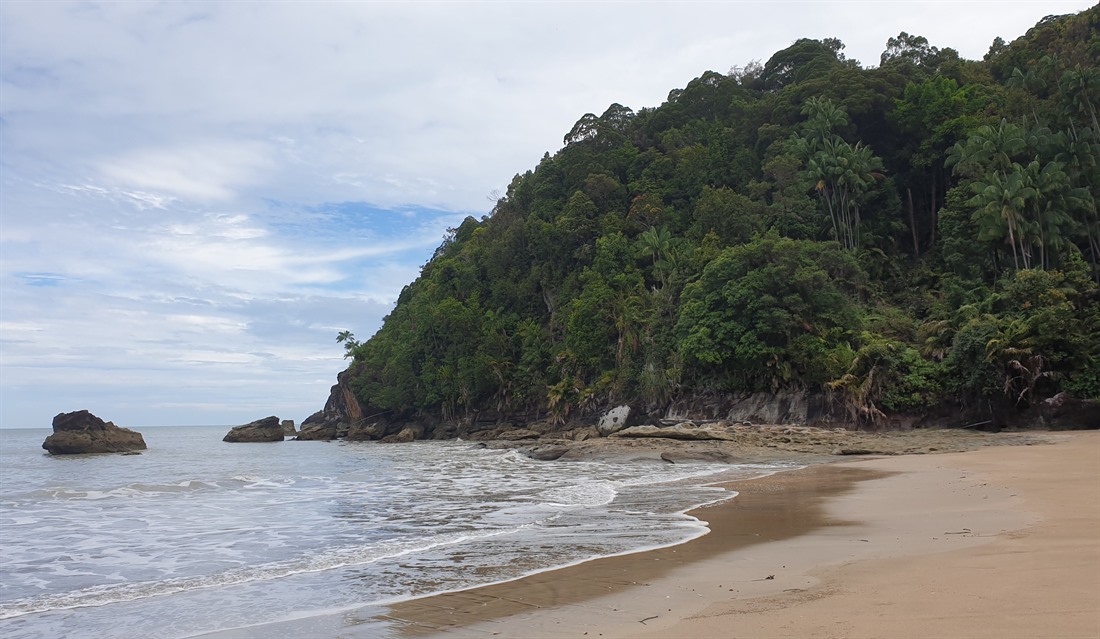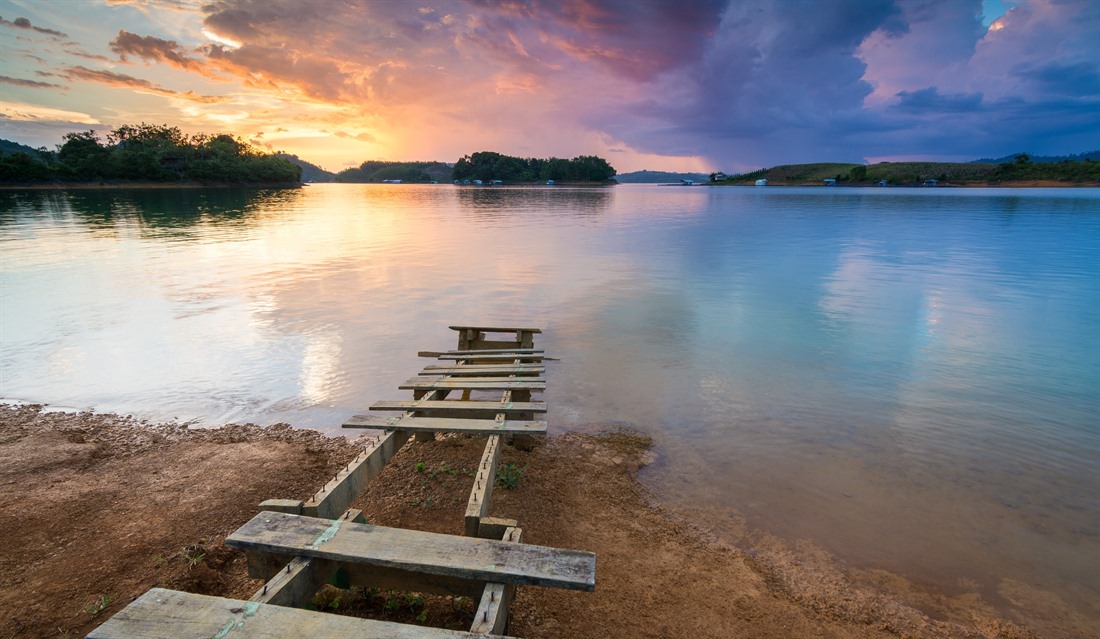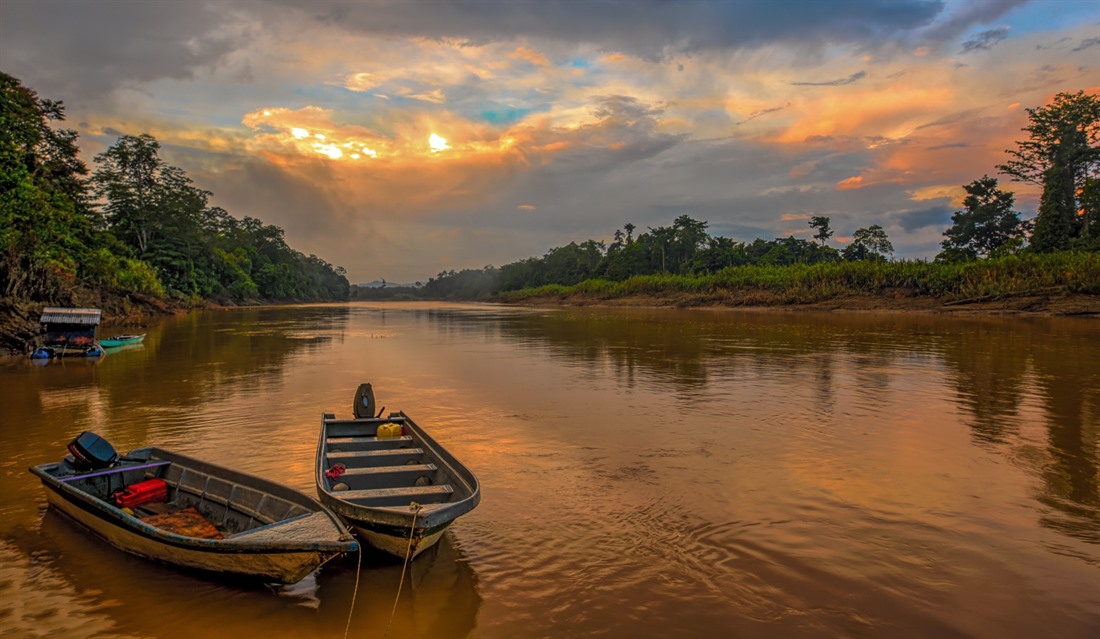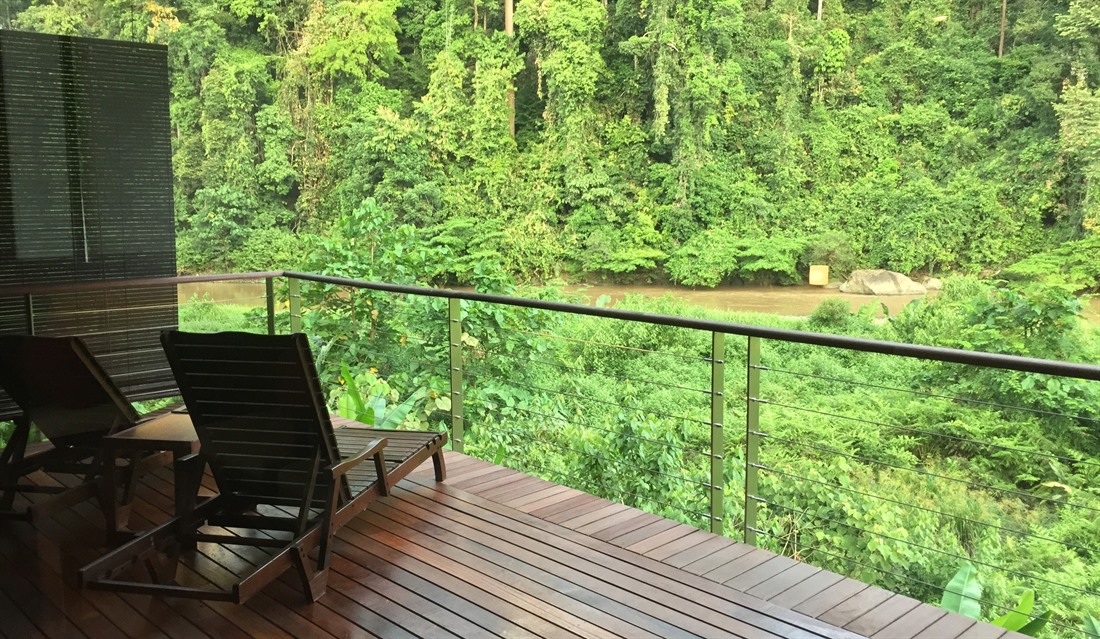Discovering the Best of Borneo
Discovering the Best of Borneo
Regent Holidays’ Travel Specialist, Stef Studley, returned to the world’s third-largest island, Borneo, to update her destination knowledge and once again live out every nature enthusiast’s dream. Traversing ancient rainforests, winding rivers, and mountainous national parks, Stef and the team got up close and personal with Borneo’s most beautiful natural landscapes – along with its plethora of fascinating creatures. Here’s an exclusive look at their extraordinary adventure.
 Kuching City Waterfront sparkling at night
Kuching City Waterfront sparkling at night
Kuching City
To begin our trip, we visited the beautiful city of Kuching, a former trading port that overlooks the winding Sarawak River. This vibrant city is a gateway to both the jungle and the sea, so you can easily access coastal and rainforest destinations. It’s a great place to base yourself for all sorts of expeditions.
We spent some time at the new Borneo Cultures Museum, the second-largest museum in Southeast Asia, which has five fascinating floors to explore. There’s a wide range of interactive displays and information showcasing the rich history of Borneo.
After this, we visited the Brooke Gallery at Fort Margherita. The gallery has a castle-like exterior, framed by manicured lawns, and offers a beautiful setting to learn about one of the most remarkable kingdoms in history, Sarawak and its 'White Rajahs'. It’s rarely crowded here, so you can expect peace and quiet as you immerse yourself in the stories of the past.
 The coast of Bako National Park
The coast of Bako National Park
Bako National Park
Taking a break from the busy city, we then headed to Bako National Park in Sarawak. Renowned for its biodiversity, this is one of the best places to see rainforest animals in their native habitats. There are plenty of hiking trails snaking through the park, connecting to some of the main beaches nearby. We hiked to a neighbouring beach and found a troop of proboscis monkeys, and a green pit viper!
 A shy Orangutan at Semenggoh Wildlife Centre
A shy Orangutan at Semenggoh Wildlife Centre
Semenggoh
We visited the incredible Semenggoh Wildlife Centre, just one hour from Kuching city. It’s one of the best spots in the world to see orangutans swinging from trees in their natural rainforest habitat, and we were lucky enough to see one, the beloved Sudoku, snacking on some rambutan fruit!
 Ocean views from Batang Ai National Park
Ocean views from Batang Ai National Park
Batang Ai National Park
Next, we travelled to Batang Ai National Park, the site of the oldest settlements of the Iban people in Sarawak. Crossing the Batang Ai reservoir by boat, passing black hornbills and macaques, we headed to a traditional longhouse where we spent the evening in great company. We befriended the Iban community’s chief and had the honour of sampling their delicious wine.
The following morning, we hiked along a luscious jungle trail in search of wildlife and swam in the beautiful Ensulai waterfall. Our friendly hosts then prepared a BBQ, along with some fish they’d caught from the river; It was delicious!
 Kinabalu National Park
Kinabalu National Park
Kinabalu National Park
Kinabalu was the next national park on the list. It’s a World Heritage Site, covering a mighty 754 square km. Mount Kinabalu is the centrepiece here, the highest mountain between the Himalayas and New Guinea. Down its rugged slope, there’s a vast display of plants, similar to flora from the Himalayas, China, Australia, and Malay Peninsula. We went for a long hike across the park and visited the botanical gardens, which were abloom with orchids and stunning pitcher plants. The park restaurant serves some incredible food, too.
 A prowling sun bear at The Sun Bear Centre
A prowling sun bear at The Sun Bear Centre
Sepilok
Before exploring the renowned Sepilok, we stopped at the Rainforest Discovery Centre nearby. It offers some engaging insight into the region’s tropical flora and fauna. There's a gentle 1km lakeside walking trail, and a series of eight canopy towers connected by walkways to give you a bird's-eye view of the trees. We saw a mother orangutan and its baby!
Sepilok Orangutan Rehabilitation Centre is the world's most famous place to see orangutans in their natural habitat. We ventured indoors initially to see the nursery where the juvenile orangutans learn how to act like their seniors. They were fascinating to watch, swinging along the rope swings and eating the food the expert team put out for them. We could have spent way more time there!
From here, we went to the outdoor feeding platforms the adult orangutans usually visit. Unfortunately, as happens in a tropical climate, it was pouring down, and orangutans don’t like the rain, so we only saw a couple of very hungry ones.
The Sun Bear Centre lies across the road from Sepilok. It’s home to a small group of rescue sun bears, the world’s second-most endangered bear. We watched the bears foraging, climbing and sunning themselves in the forest from the elevated walkways and viewing platforms. It was a very surreal experience, standing so close to them.
 Kinabatangan River
Kinabatangan River
Kinabatangan River
We took a cruise along the Kinabatangan River on yet another search for Borneo’s endemic creatures. With a staggering length of 560km, it’s the second longest river in Malaysia, extending from its headwaters in the mountains of southwest Sabah all the way to its outlet at the Sulu Sea. It was a very successful trip, leading us to proboscis monkeys, hornbills, macaques, red leaf monkeys and serpent eagles. We even saw some sleeping kingfishers on the night cruise!
 Views from Borneo Rainforest Lodge
Views from Borneo Rainforest Lodge
Danum Valley
In Danum Valley, a 130-million-year-old rainforest, we settled in for a night’s stay at the award-winning Borneo Rainforest Lodge. We thoroughly enjoyed our time here. The buffet-style cuisine was excellent, and the newly upgraded rooms were large and impressive. Our room had an outdoor bathtub, so we could bathe among the stunning scenery.
We loved the jungle hikes, the treetop canopy walkways, and the riveting night walls. The early morning canopy walks offered great sunrise views across the reserve, and we were lucky enough to see gibbons, hornbills, muntjack, mouse deer, civet cat, and red leaf monkeys kickstarting their days in the wilderness.
 The stunning coast of Gaya Island
The stunning coast of Gaya Island
Gaya Island
Our next stop was the Kinabalu Villa luxury resort on Gaya Island, just 15 minutes across the water from Kota Kinabalu. Shrouded in rich greenery, this secluded treasure made our trip all the more special, with great food and super friendly staff.
We indulged in a massage at the spa, explored the seas on a kayak, and hiked through the jungle. We spent a day in Tavajun Bay and saw streams of stunning monitor lizards – a common sight on the island. We also spent time with the Marine Conservation Centre staff and were introduced to their resident turtle, who was very friendly.
 Views from Borneo Eagle Resort
Views from Borneo Eagle Resort
Pulau Tiga
We spent our final days at the Borneo Eagle Resort on the island of Pulau Tiga, a truly lavish ending to our trip. It’s a small retreat, hosting just eight villas, with elegant rooms and highly attentive staff. We were the only guests, and our stay felt extra intimate. The resort is backed by a vast jungle, and two small beaches are just a short walk away, so the profound sense of place never left us.
Is Borneo on your bucket list?
To discover the untamed rainforests, vibrant wildlife, and captivating biodiversity of Borneo, contact one of our Travel Specialists today. We can arrange a tailor-made tour through the region’s secluded wilderness and create a nature-lover’s perfect trip.